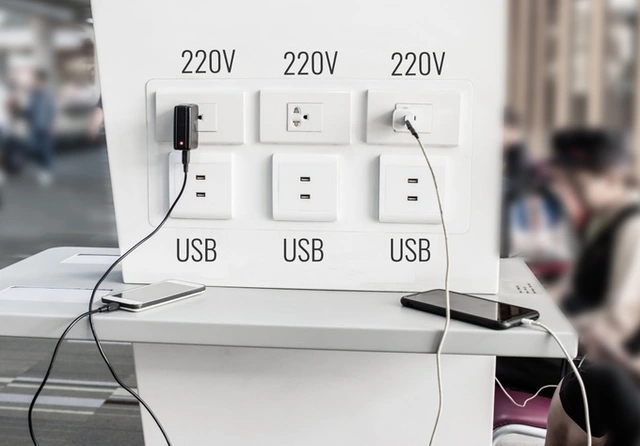Nowadays, public places such as train stations, airports, shopping centers, etc. are equipped with smartphone charging stations. These charging stations provide users with pre-installed charging bricks and cables, allowing them to easily charge their phones when needed.
However, according to a recent warning issued by the Federal Bureau of Investigation (FBI) and the Los Angeles County District Attorney’s Office in California, users should be cautious when using public charging cables provided by these stations. This is because using these public charging cables can potentially expose smartphones to malware infection and data theft.

Using public USB charging cables can pose risks to smartphones, including malware infection and data theft (Image: Pinterest).
These charging cables are designed to provide power and data transfer for mobile devices. Security researchers have revealed that hackers have found a way to infect users’ smartphones with malware through USB charging cables.
The attack method, known as “USB Charger Scam,” involves hackers secretly installing malware on public charging stations.
By using these public charging cables, users not only risk malware infection but also the potential loss of sensitive data and passwords stored on their smartphones.
Security experts have confirmed that this attack method can affect smartphones running on both Android and iOS operating systems.
“Always carry your own charger and USB cable. Use only power outlets and avoid using any provided chargers at public places,” advised an FBI representative.
Following the FBI and Los Angeles County District Attorney’s Office warning about the “USB Charger Scam” attack, the Federal Communications Commission (FCC) has also issued a warning on its website, alerting users about the potential data theft risks associated with using public charging cables.
“In some cases, hackers intentionally leave behind pre-installed cables at charging stations or even give away infected cables and chargers as free promotional gifts, aiming to steal victims’ data,” warned the FCC.
To prevent falling victim to this type of attack through charging cables, security experts advise users to minimize their use of public charging stations. They should always carry their own charger and cable or consider using a portable power bank for charging purposes.
Source: VTV.vn




































